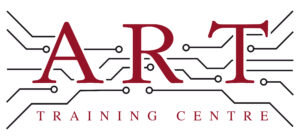Definition
Reflow Soldering is a process used in electronics manufacturing to attach electronic components to printed circuit boards (PCBs). It involves applying solder paste to the PCB, placing components on top, and then heating the assembly to melt the solder. Once cooled, the solder solidifies, creating a strong electrical and mechanical connection. This method is essential for surface mount technology (SMT) and is a key component in the assembly of modern electronic devices.
How It’s Used in the Industry
In electronics assembly, Reflow Soldering begins with the application of solder paste to the PCB using a stencil. Components are accurately placed on the solder paste, often with automated pick-and-place machines. The assembled board is then passed through a reflow oven, where it is heated in a controlled manner to melt the solder. After cooling, the solder solidifies, securing the components in place. This process is crucial for both technicians in training and experienced professionals, as it ensures high-quality connections that are vital for the reliability of electronic devices. Proper understanding of reflow soldering techniques enhances skills in soldering methods, repair, and inspection.
History & Origins
Reflow Soldering became common in electronics manufacturing during the 1980s, coinciding with the rise of surface mount technology (SMT). The process was developed to improve the efficiency and reliability of soldering in mass production. Early adoption was driven by the need for faster assembly and the miniaturisation of electronic components. The establishment of standards, such as those set by IPC (Institute for Interconnecting and Packaging Electronics Circuits), helped to formalise reflow soldering practices, ensuring consistency and quality across the industry. Technological advancements, including improved heating methods and solder materials, further solidified its importance in electronics manufacturing.
Variations
There are several variations of Reflow Soldering, including convection, infrared, and vapor phase reflow. Convection reflow uses hot air to heat the PCB, while infrared relies on radiant heat. Vapor phase reflow involves submerging the assembly in a heated vapor, which provides uniform heating. Each method has its advantages, such as differing heat profiles and suitability for various component types. Compared to wave soldering, which is used primarily for through-hole components, reflow soldering is more effective for surface-mounted devices, making it a preferred choice in modern electronics assembly.
Modern Applications
Today, Reflow Soldering is integral to electronics production, particularly for surface mount devices (SMDs) and complex assemblies. It is widely used in manufacturing consumer electronics, automotive systems, and medical devices. Additionally, reflow soldering is essential in professional training programs, ensuring technicians are equipped with the skills necessary for modern assembly techniques. Compliance with IPC standards during the reflow process is vital for ensuring the quality and reliability of electronic products, making it a critical aspect of electronics manufacturing today.
Practical Tips & Training
When working with Reflow Soldering, it is important to follow safety protocols, such as wearing appropriate personal protective equipment (PPE) and ensuring proper ventilation. Regular inspection of solder joints using techniques like X-ray or visual inspection can help identify defects. Familiarity with useful tools, such as solder paste dispensers and reflow ovens, is also beneficial. Structured training and certification in reflow soldering techniques are essential for building competence and ensuring high-quality results in electronics manufacturing.


